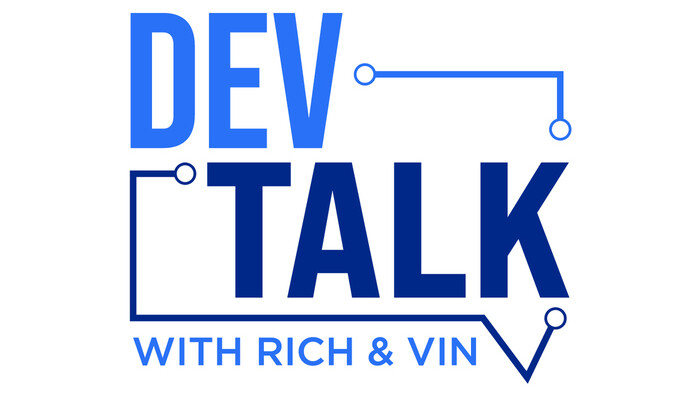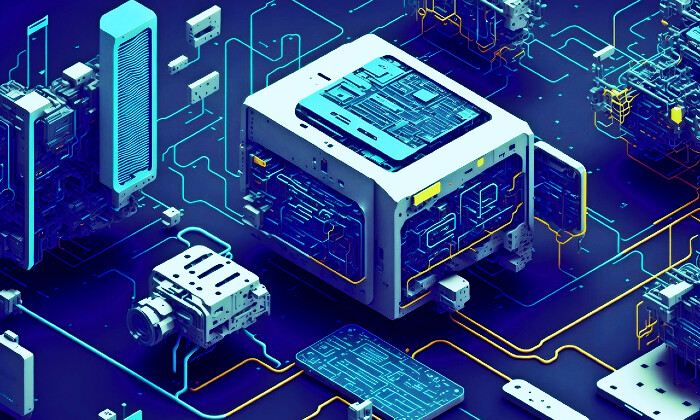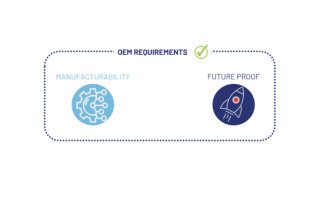IoT

Digi International Adds to its Remote Monitoring and Control Family
April 26, 2024
Minneapolis, Minnesota. Digi International introduced its Digi Connect Sensor XRT-M, the newest member to its remote monitoring and control family. Leveraging Digi Axess, Digi Connect Sensor XRT-M offers users edge and cloud-based control options utilizing a management platform with an intuitive interface streamlining data management with an array of I/O.
Storage
Multimedia

DevTalk with Rich and Vin (and Digi CEO)
April 25, 2024
Welcome to a slightly different version of our DevTalk with Rich and Vin podcast. In addition to doing our traditional tech talks, which you’ve clearly told us that you enjoy, we will be producing discussions with CEOs. But we won’t be going through the usual company blah, blah, blah. We’re going to dig a little deeper and find out what really drives these individuals, who are obviously very determined, or they wouldn’t be in the positions they are in. And we told them that to be a guest, they couldn’t limit or filter our questions in any way; anything and everything is on the table.
To get us started, we spent some time with Ron Konezny, the CEO of Digi International.
AI & Machine Learning
-
Arm Pushes Edge AI to a Higher Level, Marries Embedded with AI and IoT
April 22, 2024
-
DEEPX has AI Acceleration at COMPUTEX 2024
April 19, 2024
-
Arm CEO Rene Haas to Deliver COMPUTEX Keynote
April 19, 2024
-
COMPUTEX 2024: Unlocking Innovative AI
April 18, 2024
Automotive
-
Application Highlight: ADLINK ADM-TJ30 Brings AI to ADAS
April 08, 2024
-
NXP Releases its Open S32 CoreRide Platform Simplifying SDV Development
March 28, 2024
-
Cadence Expands Tensilica Vision Family with Radar Accelerator and New DSPs for Automotive Applications
March 11, 2024
-
Ethernovia Unveils Single and Quad Port, 10G to 1G Automotive PHY in 7nm
March 05, 2024
Consumer
-
Software-Defined Displays: The Secret Sauce for AR Smart Glasses
March 26, 2024
-
Lighter, Clearer, and More Immersive – How the Waveguide – Light Engine Combination Transforms Our View of AR Smart Glasses
March 20, 2024
-
Seeing Beyond Reality: What Are the Key Requirements That Define AR Smart Glasses' Success?
March 18, 2024
-
Wireless Haptic Vest Creates Immersive Experiences for Virtual Reality
March 15, 2024
Healthcare
-
RTLS and Mobile Medical Equipment: How Hospitals Can Prevent Critical Assets from Going Missing
January 15, 2024
-
Engineering Hero: Bringing Prosthetic Arms to Life
December 28, 2023
-
Engineering Hero: The Bright Future of Bionic Limb Prosthetics
December 27, 2023
-
Engineering Hero: Treating Brain Cancer by Targeting Mutations
December 20, 2023
IoT
-
Digi International Adds to its Remote Monitoring and Control Family
April 26, 2024
-
New Research: The State of IoT Software Development, A Benchmark for Embedded Teams and Leaders
April 25, 2024
-
New Book on Rugged Edge Offers Insights on Industrial Computing
April 24, 2024
-
7L600: EKF Introduced its First ModBlox7-Based Product
April 22, 2024
Processing
-
Swift Processing from VersaLogic
April 24, 2024
-
The Evolution of Processor Cores, and Embedded World 2024
April 18, 2024
-
Embedded Executive: Looking For a Job? Focus on Your Writing, Webster & Webster
April 17, 2024
-
Innominds Leverages Qualcomm to Build New Edge AI Platform
April 15, 2024
Security
-
Embracing FIPS Validation in Medical Device Security
April 15, 2024
-
Road to embedded world: Tuxera Secures Storage and Networks
April 09, 2024
-
Advanced Cybersecurity Platform Now Integrates Six Vulnerability Management Tools Into One Interactive Dashboard
April 04, 2024
-
Trusted Digital Identities, Trusted IP, and Trusted Apps: Wibu-Systems’ Formula for Success at Embedded World 2024
April 02, 2024
Software & OS
-
Tuxera Keeps Your Data Safe When Power is Lost
April 24, 2024
-
SYSGO Supports RISC-V with its Embedded Linux ELinOS Version 7.2
April 17, 2024
-
Product of the Week: Parasoft’s C/C++test CT for Continuous Testing & Compliance
April 15, 2024
-
LDRA Released its Domain-Specific Software Productivity Packages for the LDRA Tool Suite
April 12, 2024

























